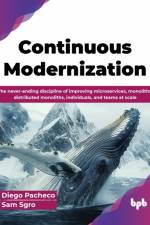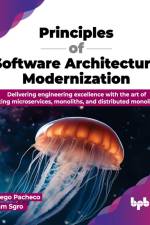av Diego Pacheco
559,-
DESCRIPTION As an engineer, it can feel like there is never enough time for testing, designing, or delivering quality solutions. Managers often feel overwhelmed by the need to deliver new features to support their teams while managing vulnerabilities and security standards. Engineers often have to work with legacy systems and learn many new technologies simultaneously to be effective in their jobs. This book teaches you continuous modernization, a key skill for tackling modern and legacy software. By adopting the right mindset and techniques, you will improve systems and workflows, making everything more efficient over time.Continuous modernization is your essential guide to updating old software systems into modern, efficient, and scalable applications. This book covers everything from changing your mindset and technical practices to business strategies and fostering a culture of innovation. It includes tips on unlearning outdated methods, embracing feedback, making smart decisions, ensuring stability, and applying modern design principles. With practical techniques and real-world examples, it provides the tools you need to modernize your software systems and achieve lasting success successfully.By the end of this book, readers will master continuous modernization principles and practices. They will learn to spot areas needing improvement, create effective modernization strategies, and implement changes that boost value and efficiency. Additionally, they will understand how to build a culture of innovation and ongoing learning to keep their software systems up-to-date and competitive in a fast-changing tech world.WHAT YOU WILL LEARN¿ Learn patterns, anti-patterns, and tools to improve software architecture decisions.¿ Eliminate limiting practices to improve development efficiency.¿ Apply disciplined feedback loops to refine architecture and design decisions.¿ Implement advanced troubleshooting techniques to prevent design flaws.¿ Continuously refactor systems and scale modernization efforts in distributed architectures.WHO THIS BOOK IS FOROur book is for professionals in the field of computer science. It is for software architects, engineers, testers, managers, directors, and VPs. This is for individuals and teams who may or may not have a modernization project but care about improving individuals and systems daily.


